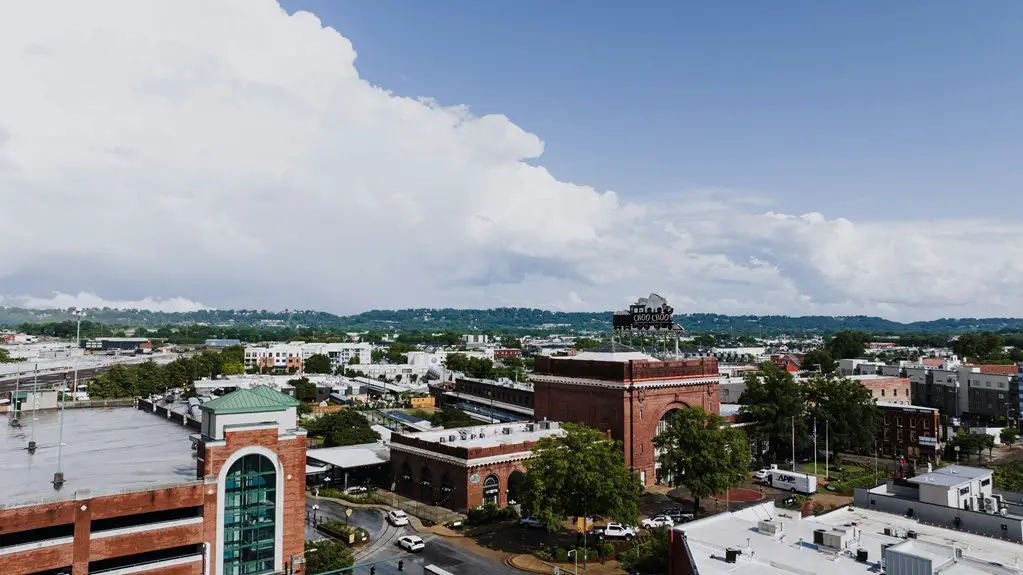You’ve probably noticed how remote work has reshaped daily commuting. Fewer people are hitting the roads, and traffic patterns are shifting. This change isn’t just temporary; it’s prompting cities to rethink their transportation infrastructure. As commuting becomes more flexible, the implications for public transit and urban mobility are profound. What does this mean for future planning, and how will cities adapt? The answers could redefine how we think about transportation in our increasingly hybrid work environment.
Table of Contents
Key Takeaways
- Remote work reduces daily commuting, leading to less traffic congestion and improved air quality in urban areas.
- Public transportation ridership has declined, prompting transit authorities to reconsider service frequency and route planning.
- The shift in commuting patterns necessitates innovative solutions to adapt public transport systems to changing user demands and preferences.
- Economic impacts include decreased fare revenue for public transit and altered demand for rideshare and delivery services, requiring flexible transportation solutions.
- Infrastructure planning must focus on sustainability and adaptability to support evolving commuting dynamics and integrate multi-modal transport options.
The Shift in Commuting Patterns
As remote work becomes the norm for many, you’ve likely noticed a significant shift in commuting patterns. Instead of rushing to the office each morning, you might find yourself working from home, which changes how you plan your day.
You may now have more flexibility in your schedule, allowing you to run errands or enjoy longer breaks. This shift often leads to less stress and a better work-life balance.
Furthermore, you might also notice that friends and colleagues have adopted similar routines, leading to fewer people on the road during peak hours.
While this new dynamic can be invigorating, it also raises questions about how infrastructure and transportation services will adapt to these evolving patterns in the long term.
Impact on Traffic Congestion
With fewer people commuting to traditional offices, traffic congestion has noticeably decreased in many urban areas.
You’ve likely experienced smoother drives or shorter travel times, making your daily routine more efficient. This decline in road traffic not only reduces frustration but also improves air quality and lowers stress levels.
You may find that you can run errands or meet friends without the usual delays. Additionally, fewer cars on the road create safer conditions for cyclists and pedestrians, encouraging more people to explore alternative modes of transportation.
As remote work continues to be a viable option, cities may need to rethink their infrastructure planning, focusing on sustainable solutions that accommodate this new normal while keeping congestion at bay.
Changes in Public Transportation Usage
While many commuters have shifted to remote work, public transportation usage has taken a significant hit.
With fewer people traveling to offices, buses and trains are seeing drastically reduced ridership. You might notice empty seats during peak hours, which were once bustling with daily commuters.
This decline not only impacts revenue for transit authorities but also affects the frequency and reliability of services. As demand decreases, some routes may face cutbacks, leading to longer wait times and less convenience for those who still rely on public transport.
You’ll likely find that your commuting options are changing, and the challenges faced by public transportation systems will require innovative solutions to adapt to this new reality.
Remote Work and Urban Mobility
The shift to remote work has reshaped urban mobility in profound ways. You might’ve noticed fewer cars on the road during rush hours, leading to less congestion and cleaner air.
With many people working from home, public transit usage has declined, prompting cities to rethink their transportation strategies. You may find that walking and biking have become more appealing options, as urban areas adapt to accommodate these modes of transport.
Additionally, shared mobility services, like ride-sharing, have seen fluctuations in demand as commuting patterns change.
This evolution in urban mobility not only impacts your daily routine but also influences how cities prioritize infrastructure investments and develop more sustainable transportation options for the future.
Infrastructure Planning for a Hybrid Workforce
As you consider the future of work, you’ll notice shifts in commute patterns that require a rethinking of infrastructure.
Your needs for flexible space are changing, and so should the way cities plan their transportation.
Adapting to a hybrid workforce means addressing both the flow of people and the spaces they need to thrive.
Shifts in Commute Patterns
Although many workers now split their time between home and the office, the shift in commute patterns demands a reevaluation of our infrastructure. You might notice fewer rush hour traffic jams as flexible schedules allow for staggered commuting.
However, this also means that public transport systems need to adapt to fluctuating demand. With some days seeing high ridership and others low, transit agencies must rethink routes and schedules.
Additionally, you’ll likely see an increase in cycling and walking as people seek healthier, more sustainable alternatives. Infrastructure planning should prioritize safe bike lanes and pedestrian-friendly spaces to accommodate this shift.
Flexible Space Requirements
With a growing number of employees working remotely part-time, businesses need to rethink their physical spaces to accommodate this hybrid model. Flexible space requirements can enhance collaboration and productivity while reducing overhead costs. You might consider incorporating shared workspaces, meeting rooms, and quiet zones to adapt to varying employee needs.
Here’s a quick overview of flexible space options:
| Space Type | Purpose | Benefits |
|---|---|---|
| Shared Workspaces | Collaboration and teamwork | Foster creativity and engagement |
| Meeting Rooms | Team discussions and planning | Enhance communication |
| Quiet Zones | Focused work | Boost individual productivity |
Environmental Implications of Reduced Commuting
The shift to remote work has greatly altered transportation patterns, leading to remarkable environmental benefits.
With fewer people commuting daily, you’re contributing to a significant reduction in greenhouse gas emissions. Fewer cars on the roads mean less air pollution, which improves overall air quality in urban areas.
This shift also reduces traffic congestion, resulting in less time spent idling and more efficient fuel consumption.
Additionally, decreased demand for public transportation can allow for a more focused investment in sustainable transport options, like biking and walking infrastructures.
You might find that with remote work, there’s not just a personal convenience; there’s a broader positive impact on the planet as cleaner air and quieter streets become the new norm.
Economic Effects on Transportation Services
As remote work reshapes daily life, it greatly impacts transportation services economically. You might notice fewer commuters on public transit, leading to decreased fare revenue for transit agencies. This drop in ridership forces them to reevaluate budgets and service levels, potentially resulting in reduced frequency or even route cuts.
Rideshare and taxi services also feel the pinch; with fewer people commuting, demand drops, affecting driver earnings and company profits.
Rideshare and taxi services face challenges as reduced commuting leads to lower demand, impacting driver earnings and company revenues.
On the flip side, delivery services gain popularity as people order more online, boosting demand for logistics and last-mile delivery providers.
With these shifts, you’ll see transportation services adapting to new economic realities, working to balance costs while meeting changing consumer needs in a remote work world.
Future Trends in Transportation Infrastructure Development
How will the shift toward remote work influence the future of transportation infrastructure?
As you adapt to a more flexible work environment, transportation needs will evolve. Cities may prioritize developing infrastructure for active transportation, like cycling and walking paths, since fewer people will commute daily.
You’ll likely see more investment in public transit options that cater to off-peak travel, improving efficiency and accessibility. Additionally, smart technology integration will become essential, enabling real-time data and enhancing user experience.
As remote work continues to reshape your daily routine, infrastructure planning will focus on sustainability, reducing congestion and emissions.
Ultimately, embracing these trends will create a more resilient, adaptive transportation network that meets your changing needs.
Frequently Asked Questions
How Does Remote Work Impact Local Businesses Near Transportation Hubs?
Remote work shifts consumer habits, so you’ll notice local businesses near transportation hubs may see fewer customers during peak hours. This change can force them to adapt, promoting online services and flexible hours to survive.
What Technologies Support Remote Work in Enhancing Transportation Efficiency?
To enhance transportation efficiency, you’ll find technologies like ride-sharing apps, real-time traffic updates, and remote work tools essential. They streamline travel, optimize routes, and reduce congestion, making commuting smoother and more efficient for everyone.
Are There Demographic Differences in Remote Work Transportation Patterns?
Yes, you’ll find demographic differences in remote work transportation patterns. Younger workers often prefer flexible, tech-driven solutions, while older employees may lean towards traditional commuting methods, affecting overall transportation trends and infrastructure usage.
How Does Remote Work Influence the Demand for Parking Spaces?
Remote work decreases your need for parking spaces since fewer employees commute daily. You’ll find businesses reassessing their parking requirements, potentially reducing spaces while reallocating resources to enhance remote work facilities and support.
What Role Does Policy Play in Shaping Remote Work Transportation Strategies?
Policy shapes remote work transportation strategies by establishing guidelines and incentives. You’ll see regulations that promote flexible commuting options, support public transit, and encourage businesses to adapt, ultimately enhancing mobility and reducing congestion in urban areas.




